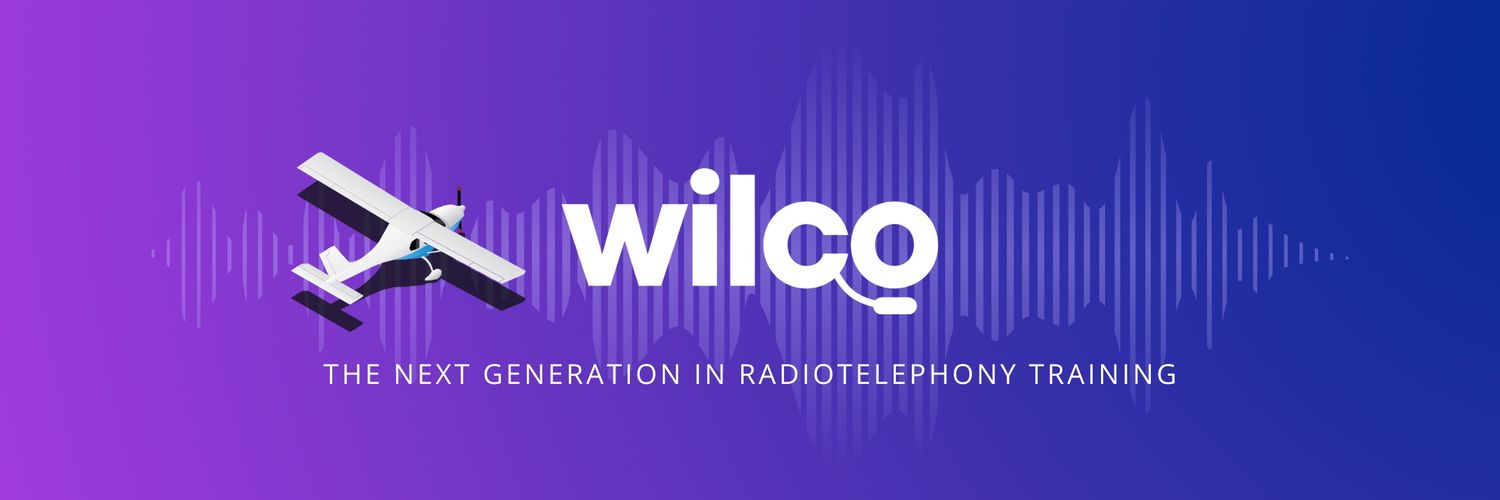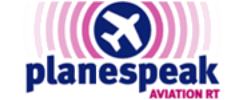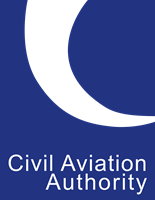WILCO RADIO FEATURES
Introduction to aircraft squawk codes
A transponder squawk code is a four-digit code that is assigned to an aircraft by air traffic control and transmitted by the aircraft's transponder.
The code (known as a 'squawk code', or 'transponder code') is used by ATC to identify and track the aircraft on radar screens at aerodromes and control centres. Aircraft are assigned a unique squawk code, which can be changed by air traffic control (through radio communication with the pilot) as needed to manage air traffic. Squawk codes are typically used in conjunction with a flight plan to help air traffic controllers keep track of an aircraft's location and intended flight path.
What does it mean when a plane squawks?
When a plane squawks, it means that the aircraft's transponder is transmitting a squawk code. The squawk code is transmitted via radio waves and can be picked up by radar systems, allowing air traffic controllers to identify and track the aircraft on their radar displays.
The history and development of squawk codes
Squawk codes were first introduced in the 1940s as a way to identify and track aircraft on radar. Initially, the codes were simple two-digit numbers that were assigned to each aircraft by air traffic control and transmitted via the aircraft's transponder. Over time, the codes became more complex and were extended to four digits to allow for more unique combinations and greater precision in tracking aircraft.
In the early days of squawk codes, air traffic controllers would manually assign a code to each aircraft and instruct the pilots to enter the code into their transponder. This could be a time-consuming and error-prone process, especially in busy airspace. As a result, automated systems were developed to assign squawk codes automatically, based on the aircraft's flight plan and other factors. This helped to streamline the process and improve the accuracy and efficiency of air traffic control.
In general aviation (GA), pilots are still instructed to manually enter squawk codes into their transponder by an air traffic controller.
Today, squawk codes are an essential tool in air traffic control, and are used in conjunction with other technologies such as radar and flight-tracking systems. They continue to evolve and improve, providing air traffic controllers with the information they need to safely and efficiently manage the flow of air traffic.
Understanding transponder technology and how squawk codes are transmitted
An aircraft transponder is an electronic device installed on an aircraft that is used to transmit a unique identification code to air traffic control (ATC) in order to identify and track the aircraft on radar. The code is transmitted via radio waves and can be picked up by radar systems, allowing air traffic controllers to identify and track the aircraft on their radar displays.
The transponder works by receiving a radio signal from air traffic control, which includes a unique interrogator code. The transponder then responds to this signal by transmitting a reply that includes the aircraft's squawk code. This reply is received by the air traffic control radar system, which uses the squawk code to identify and track the aircraft.
In addition to transmitting the squawk code, transponders can also be used to transmit other information about the aircraft, such as its altitude and speed. This can be helpful for air traffic controllers to have a more complete picture of an aircraft's position and movement whilst in flight.
The technology behind transponders has evolved over time, and today's transponders are highly sophisticated and reliable. They are an essential component of modern air traffic control systems and play a critical role in ensuring the safe and efficient flow of air traffic.
Continues below...
The role of squawk codes in air traffic control
Squawk codes are an essential tool in air traffic control, as they allow air traffic controllers to identify and track aircraft on a radar operator's screen. Each aircraft is assigned a unique four-digit squawk code by ATC, and the code is transmitted by the aircraft's transponder. The code is picked up by air traffic control radar systems, which use it to identify and track the aircraft on their displays.
Squawk codes serve a number of important functions in air traffic control. First and foremost, they allow air traffic controllers to accurately identify and track individual aircraft. This is especially important in busy airspace, where there may be many aircraft in the same area at the same time. Squawk codes also help to ensure that air traffic controllers have accurate and up-to-date information about an aircraft's flight plan and intended route, which can be used to manage the flow of air traffic and prevent collisions and airprox incidents.
In addition, squawk codes can also be used in emergency situations. If an aircraft experiences a problem or emergency, the pilot can transmit a designated emergency squawk code (see below), which alerts air traffic controllers to the situation and gives the aircraft priority handling. This can help to ensure that the aircraft receives the necessary assistance as quickly as possible.
Overall, squawk codes play a vital role in air traffic control and are an essential tool for ensuring the safe and efficient flow of air traffic.
How does an aircraft show up on a radar screen?
An aircraft shows up on a radar screen when its transponder transmits a radio signal that is picked up by the radar system. The squawk code is picked up by the radar system, which uses it to identify and track the aircraft on the radar display.
In addition to transmitting the squawk code, the transponder can also transmit other information about the aircraft, such as its altitude and speed. This information is also picked up by the radar system and is used to provide a more complete picture of the aircraft's position and movement.
Radar systems are an essential tool in air traffic control, as they allow air traffic controllers to accurately identify and track aircraft in order to manage the flow of air traffic and prevent collisions.
Common and emergency squawk codes and their meanings
Squawk codes are assigned by air traffic control and can be changed as needed to manage air traffic. Some common squawk codes and their meanings include:
Squawk 7000: This is the ‘conspicuity code’ for VFR aircraft that are not assigned a specific code by ATC.
Squawk 2000: This is the ‘conspicuity code’ for IFR aircraft that are not assigned a specific code by ATC.
Squawk 7700: This is the emergency squawk code, and indicates that the aircraft is in distress and needs priority handling from air traffic control.
Squawk 7500: This code indicates that the aircraft is subject to unlawful interference (hijack).
Squawk 7600: This code indicates that the aircraft has experienced a radio failure and is unable to transmit or receive messages.
Squawk 0030:: This code indicates that the aircraft is lost (UK specific).
What are the different modes on a transponder?
Aircraft transponders have a number of different modes that can be selected depending on the situation, including:
Mode A: This mode is used to transmit the aircraft's position to air traffic control.
Mode C: This mode is used to transmit the aircraft's position and altitude to air traffic control.
Mode S: This mode is used to transmit the aircraft's unique squawk code, as well as other information such as its altitude and speed.
The mode that is used by the transponder will depend on the requirements of the air traffic control system and the situation at hand. For example, in most cases, Mode S will be used to transmit the aircraft's squawk code, while Mode C may be used to transmit altitude information.
What is "squawk ident" on an aircraft transponder?
"Squawk ident" on an aircraft transponder is a function that allows the pilot to transmit the aircraft's squawk code and a special identification code, known as an "ident" to air traffic control. The ident code is a one-time, unique code that is transmitted along with the aircraft's regular squawk code and is used to help air traffic controllers quickly and easily identify the aircraft on their radar displays.
Squawk ident is typically used in busy airspace or when an aircraft is being handed off from one air traffic controller to another. In these situations, transmitting the ident code along with the regular squawk code can help air traffic controllers to quickly and easily identify the aircraft on their radar displays, which can improve the accuracy and efficiency of air traffic control.
Squawk ident is typically activated by the pilot using a switch or button on the transponder control panel. Once activated, the transponder will transmit the aircraft's regular squawk code along with the ident code for a short period of time. After the ident has been transmitted, the transponder will return to transmitting the regular squawk code.
Best practices for selecting and using squawk codes
There are a few best practices for selecting and using squawk codes in order to ensure their effective use in air traffic control:
Use the correct code: It's important to select and use the correct squawk code for the given situation. Using the wrong code, or using a code in a non-emergency situation, can cause confusion and impede the ability of air traffic controllers to effectively manage air traffic.
Only use emergency codes in actual emergencies: Emergency squawk codes, such as 7700, should only be used in actual emergency situations. False alerts can cause confusion and impede the ability to effectively manage air traffic, so it's important to only use these codes when they are truly needed.
Communicate clearly with air traffic control: If you are using an emergency squawk code, it's important to clearly and concisely communicate the nature of the emergency to air traffic control. This will help them to understand the situation and provide the necessary assistance as quickly as possible.
Follow instructions from air traffic control: If you are using an emergency squawk code, it's important to follow any instructions that are given to you by air traffic control. This will help to ensure that the emergency is handled in the most effective and efficient manner possible.
It is critical to use squawk codes responsibly and only in the situations for which they are intended. This will help to ensure the safe and efficient flow of air traffic and prevent confusion, airspace infringements, and airprox incidents.
Future developments in aircraft squawk code technology
Squawk code technology is constantly evolving and improving, and there are a number of potential future developments that could enhance its effectiveness and efficiency. Some potential developments include:
Improved transponder technology: As transponder technology continues to advance, transponders may become smaller, lighter, and more energy-efficient. This could make them easier to install and use on aircraft, and could also improve their reliability and performance.
Enhanced radar systems: Advances in radar technology could allow for more precise tracking of aircraft and the ability to detect and track smaller aircraft, such as drones. This could improve the accuracy and reliability of air traffic control systems and enhance safety.
Integration with other technologies: Squawk codes may be integrated with other technologies, such as GPS and satellite communication, to provide a more complete picture of an aircraft's position and movement. This could improve the accuracy and efficiency of air traffic control systems.
Increased automation: Automation may be used to more efficiently assign and manage squawk codes, reducing the need for manual intervention and the potential for errors. This could improve the speed and accuracy of air traffic control systems.
The future of squawk code technology is very promising, and there are many potential developments that could enhance its effectiveness and improve the safety and efficiency of air traffic control.

Learn CAP413 radiotelephony quickly and easily with our interactive training platform.
Wilco Radio is the perfect way to study and prepare yourself for the FRTOL (Flight Radiotelephony Operator's Licence) exam.
Or, if you're already an experienced pilot, use Wilco Radio to brush up your radio skills, become more confident, and become a pro communicator.
Put your credit card away. It costs nothing to start your journey today.







